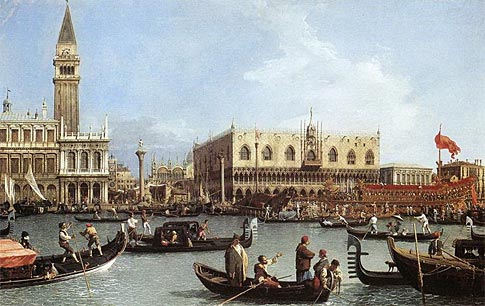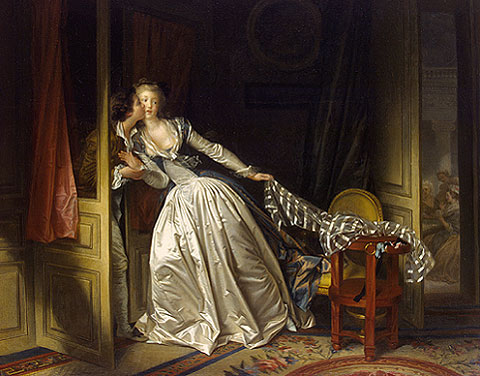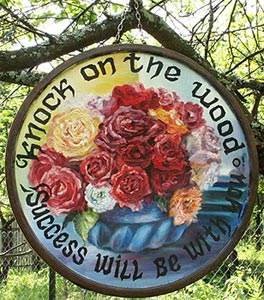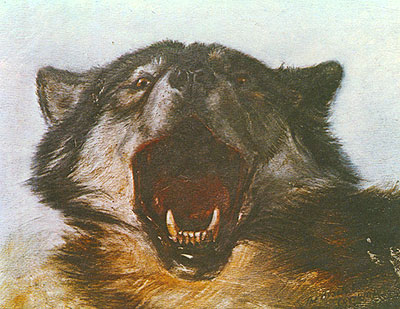Barbizon School of Painting
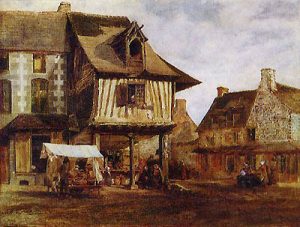 Away from the noise of the capital, French painters of the last century chose the area around the royal residence of Fontainebleau, which since the times of Francis I has attracted noble hunters. As early as the 18th century, J.-B. Audrey wrote pompous scenes of royal hunting. After the tumultuous events of the Great French Revolution and the fall of Napoleon I, when the time of the festivities is gone, landscape painters frequent here. Especially they liked the village of Barbizon. Here, among the dense forests, lived peasants who harvested charcoal. Peace and silence prevailed in Barbizon, it seemed to be the perfect place for those who are attracted by nature, which retains its original charm. In the houses, barely visible behind the hedges of bushes, artists began to stop.
Away from the noise of the capital, French painters of the last century chose the area around the royal residence of Fontainebleau, which since the times of Francis I has attracted noble hunters. As early as the 18th century, J.-B. Audrey wrote pompous scenes of royal hunting. After the tumultuous events of the Great French Revolution and the fall of Napoleon I, when the time of the festivities is gone, landscape painters frequent here. Especially they liked the village of Barbizon. Here, among the dense forests, lived peasants who harvested charcoal. Peace and silence prevailed in Barbizon, it seemed to be the perfect place for those who are attracted by nature, which retains its original charm. In the houses, barely visible behind the hedges of bushes, artists began to stop.
This area began to be settled by them in the 1830s, and soon a Baronis colony of landscape painters was formed, numbering up to twenty people. Glory, recognition to many of them came in the middle of the century, when the concept of the “Barbizon School” was formed – that is, the masters who preferred to work in this area, conveying the uncomplicated motifs of forest edges, marshes and grazing flocks. Bar-bisonons gradually attracted the sympathy of the public and critics, became a noticeable phenomenon in the art of the XIX century. It is worth remembering that the landscape in the last century was often perceived as the leading genre of painting – in contrast to the previous time, when it was considered secondary. Lively, sincere feelings were visible in it. The discovery of light, air, which gave such an originality of the painting of those years, was done by landscape painters. Their love for simple, simple motives — the approach of a thunderstorm, the lone traveler among the fields, the sunset time — are especially valued today, when more and more new problems make you think about the future of the natural environment with alarm.
Fontainebleau’s forests inspired more than one group of French artists. All the major landscape painters of the XIX century somehow came into contact with this area in the works. At the beginning of the last century, J. Michel, the ancestor of new landscape art in France, came here, fifty leagues from Paris, with friends. Inspired by the example of the old Dutch masters, he began to depict desert landscapes, where a ray of sunlight breaking through the clouds glides over the ground. This soon forgotten master had the nickname Reisdal of Montmartre, which hinted at his passion for Dutch art. It was rediscovered in the middle of the 19th century and was assessed as the predecessor of the new school. Writer E. de Senankur, author of the famous Oberman novel at the beginning of the century, enthusiastically wrote about the environs of Fontainebleau, perceiving them with romantic exaltation. Landscape painters Alini and Ledieu in 1824, visiting the director of the local manufactory, admired the beauty of the surroundings. Finally, K. Corot looked in before the trip to Italy. The romantic P. Yue, a friend of Delacroix, who, according to his contemporary, opened his “window of painting”, did not pass by these lands. All of them paved the way for those who later glorified this area in painting.
They were T. Rousseau, D. de la Peña, J. Dupre, F. Millet. They were most often found here with a notebook and an easel, which, by the way, was conveyed in the 1833 drawing “The Artist in the Fontainebleau Forest” by C. Corot. In addition to them, Barbizon was visited by G. Courbet, sculptor A. Bari, who, like many Barbizonians, captured the views of the surrounding forests. “A large workshop in the open air” attracted young shoots – Daubigny, Troyon, Chantrail. Soon, the neighboring towns of Marlott and Chailly began to settle in, where the next generation of artists, Monet, Sisley, Cezanne, Sulfur, who did not forget the lessons of their teachers, predominantly worked. The history of Fontainebleau ended with pilgrimage for painters from England, Germany, Romania, Hungary and the United States of America at the end of the 19th century. Even today, here you can meet people sitting under large umbrellas and writing sketches.
The school flourished in the 1850s. Many artists stayed with the owner of the White Horse Inn F. Ganne. He began to attach new rooms to the hotel in which the studios were located. F. Millet worked in a small hall, who, unlike others, preferred to stay in Barbizon for the winter. For his famous canvas, “Angers-lus”, representing the peasants at the evening prayer in the field, the peasant woman Maria posed (there is a self-portrait drawing of the master, he imprinted himself on this work). In one of the former studios, a small museum of T. Rousseau is now open, which lived for a long time in this village.
In the summer, artists organized real festivals. The artistic fraternity lived happily, everyone worked joyfully. It is not by chance that the largest representatives of the school created here a number of genuine masterpieces. They developed a new approach to nature, which entered their flesh and blood.
